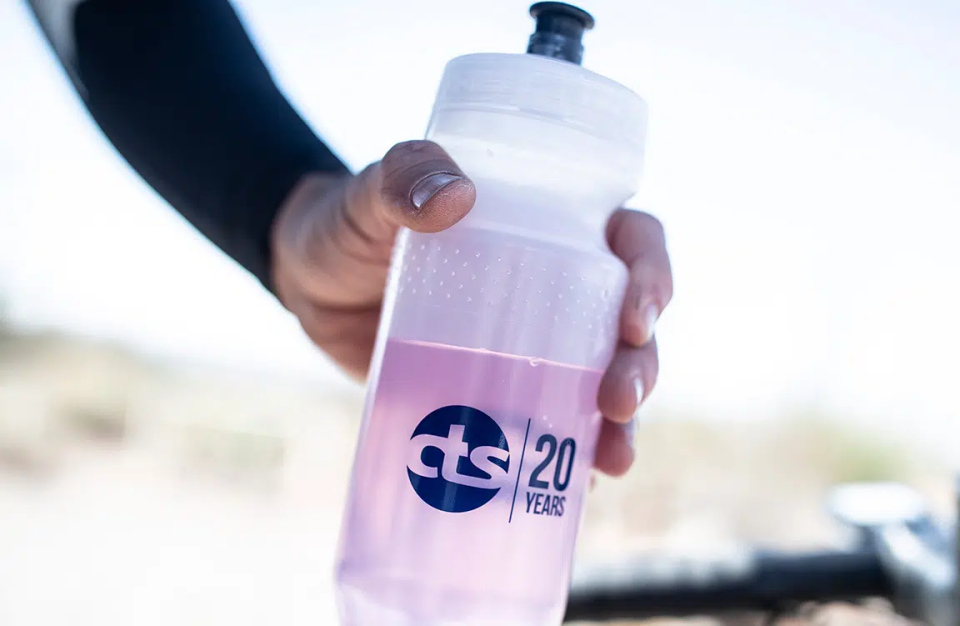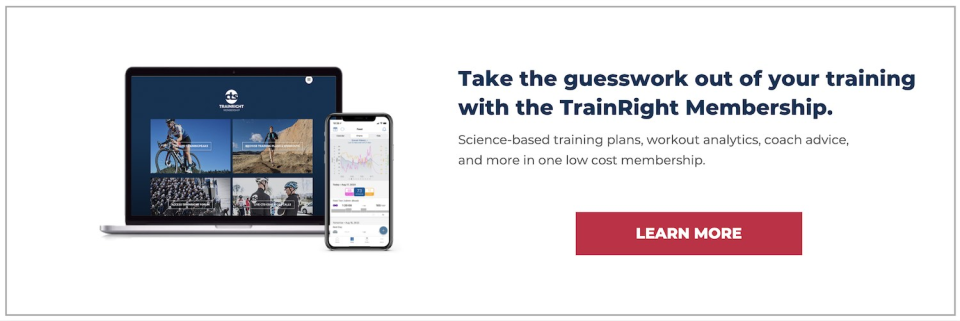Cycling Nutrition: What to Eat and Drink During Bike Rides of Any Length
When you ask a group of cyclists what they eat and drink on rides, you’ll get almost as many answers as there are riders in the group
Everyone fuels rides a little differently, which is perfectly normal. Cycling nutrition and hydration are not one size fits all. However there are some key principles cyclists should use as starting points. Here are CTS's recommendations for short, medium, long, and ultra-long rides.

Cycling Nutrition Principles to Remember
Hydration drives nutrition strategy
Your nutrition strategy can only work if you are well hydrated. It doesn’t matter what you eat or how much; if you are dehydrated that energy will either make it to working muscles more slowly or stay in your gut long enough to lead to nausea. Dehydration slows gastric emptying and slows gut motility. At first, the detriment is small, but it gets worse the more dehydrated you become.
Carbohydrate fuels high intensity
There is a time and place for training with low carbohydrate stores. However, when it’s time to go hard in interval workouts or competitions, those high-intensity efforts are fueled by carbohydrate. If you don’t have carbohydrate available, your power output, ability to repeat hard efforts, and likelihood of success all go down. Cycling is an intermittent-intensity sport, meaning there are periods when of low- to-moderate intensity that are primarily fueled by fat, but there critical moments of group rides or competitions are higher intensity efforts that require carbohydrate. Similarly, the interval workouts that build the fitness that makes those high-power efforts possible are fueled by carbohydrate.
Cycling nutrition during rides is therefore affected by not only the length of the ride, but potentially by intensity demands as well.
Eat carbohydrate, just not too much
The standard sports nutrition recommendation of 30-60 grams of carbohydrate per hour of aerobic exercise is based on the fact most people can only absorb about 1 gram of carbohydrate per minute. That doesn’t mean you always need to consume as much as you can possibly absorb. You only need to aim for the high end of the range – or train your gut to absorb up to 90 grams/hr – when your rides are long enough and/or strenuous enough to deplete carbohydrate stores.
I find it’s better to gauge carbohydrate intake by a rider’s hourly kilojoule output. If you’re riding with a power meter I recommend consuming enough carbohydrate calories to replenish 20-30% the kilojoules of work you’re doing per hour. For example, 500 kilojoules/hr is good ballpark for the work done by a medium-sized, moderately-fit male cyclist riding at a sustainable endurance pace. I’d recommend this rider aim for 100-150 calories of carbohydrate (25-37 grams) per hour during rides longer than 90 minutes. If that same rider is racing or in a fast group doing 800 kilojoules of work per hour, then 40-60 grams of carbohydrate per hour may be necessary.
Overeating is worse than eating too little
On the bike it’s better to be a little hungry than to be over filled. Overeating is one of the most common mistakes I see during longer rides and gran fondos. Eating more than you need or can process quickly means you have food hanging around in your gut too long. That scenario often leads to nausea. To make matters worse, the only remedy involves slowing down, cooling down, sipping water, and waiting.
On the other hand, erring on the side of being slightly hungry means you can quickly and easily get back to feeling great by eating some carbohydrate. Assuming you’re well hydrated, fixing a slight caloric deficit only requires 10 minutes and consumption of about 20-25 grams of carbohydrate.
Separate calories from hydration
Carbohydrate-rich sports drinks can be very useful, but like everything else there is a time and a place. When considering what to drink, I think it’s worth considering how much you’ll need to drink. If it’s hot out, your hydration needs will increase dramatically, but your ability to absorb carbohydrate will not. When your hydration is in your bottles and your calories are in your pocket, you can adjust intake independently based on temperature and intensity.
With all of the above taken into consideration, here’s what to eat and drink for rides of any length:
Fueling Rides of Any Length
Short Rides (up to 60-75 minutes)
Hydration: plain water
Calories: None
Rationale: If it’s been 24 hours or more since your last strenuous workout, your muscle glycogen stores should be fully replenished. With full glycogen stores you have more than enough carbohydrate on board to fuel a short ride. And since short rides are often very intense (like indoor interval workouts or criteriums), you’re not going to be able to digest food very well anyway. Fluid replenishment is the highest priority, because you can sweat out up to 1.5 liters of fluid in a hot, high-intensity hour.
After the ride: You don’t need a huge meal, but consuming a small meal rich in carbohydrate and containing a moderate amount of protein within 30-60 minutes after your ride will help jumpstart glycogen replenishment
Medium Rides (1-3 hours)
Hydration: water and/or electrolyte-rich sports drink (we recommend and use Fluid Hydration)
Calories: 20-30% of hourly energy expenditure if known, 30-60 grams of carbohydrate per hour if energy expenditure is unknown.
Recommended calorie sources: bars/foods with mix of carbohydrate, fat, and protein for moderate-intensity rides. Shift more to simple sugars from chewables or gels as intensity increases.
Rationale: For cycling nutrition within this range, consuming carbohydrate has been conclusively shown to improve performance in intermittent-intensity sports like cycling. Sustainable power, peak power, and time to exhaustion increase, and repeatability of hard efforts improves.
After the Ride: You’ll definitely want a moderate-sized meal rich in carbohydrate, protein, and fat within 60 minutes after the ride. Save recovery drinks for rides that accumulate more than 1500 kilojoules of work, or for times when you will be training hard again within the same day or less than about 18 hours.
Long Rides (3-6 hours)
Hydration: preferred combo of water, electrolyte drink, carbohydrate drink. Separate calories from hydration when anticipating hot weather or high-intensity.
Calories: 20-30% of hourly energy expenditure if known, 30-60 grams of carbohydrate per hour if energy expenditure is unknown.
Recommended calorie sources: Start with solid foods, including sandwiches, homemade rice bars, and sports nutrition bars (we recommend ProBar Bite). Save the chewables and gels for the last third of the ride.
After the ride: Sit down to a substantial meal within 60 minutes of finishing the ride. Start with a carbohydrate-rich recovery drink if you’re not going to be able to get a meal right away, or if you’re doing a multi-day event. You don’t need to gorge yourself, especially if you were eating properly on the bike. It is better to have a regular sized meal and continue snacking and hydrating throughout the afternoon/evening. Consider a pre-bedtime snack to fuel muscle protein synthesis overnight.
Extra-long Rides (6+ Hours)
Hydration: preferred combo of water, electrolyte drink, carbohydrate drink. Separate calories from hydration when anticipating hot weather or high-intensity.
Calories: 20-30% of hourly energy expenditure if known, 30-60 grams of carbohydrate per hour if energy expenditure is unknown. Be conservative with caloric intake because it’s easy to overload the gut as rides get very long.
Recommended calorie sources: whatever works and will motivate you to keep eating.
Rationale: For cycling nutrition during ultraendurance rides, food boredom and GI distress are the big challenges. The intensity of very long rides is generally moderate. As a result, your ability to absorb carbohydrate fast enough is rarely a problem. Having a variety of flavors, textures, and cravable foods is key. The best nutrition strategy in the world is useless when you’d rather not eat than eat what’s in your pocket.
After the ride: The big thing is to stay present and engaged long enough to actually get a good meal. Oftentimes, riders just totally shut off their brains at the finish of an extra-long ride. Instead, wait until you change, shower, and eat before considering the ride finished. Push through and stay focused until those tasks are complete, and you’ll feel a lot better the next morning. Consider a pre-bedtime snack to fuel muscle protein synthesis overnight.
To find out more, please visit: https://trainright.com/what-to-eat-and-drink-during-bike-rides-of-any-length/
FREE 14 DAY MEMBERSHIP TRIAL
Gran Fondo Guide fans, click on the image above and get TrainRight Membership for a 14 day no obligation trial. TrainRight Membership comes with a 30-day money-back guarantee!
About CTS
As it has since 2000, Carmichael Training Systems leads the endurance coaching industry with proven and innovative products, services, and content. And the results speak for themselves; no other coaching company produces more champions, in such a wide variety of sports and age groups, than CTS.
For more information, please visit: https://trainright.com

